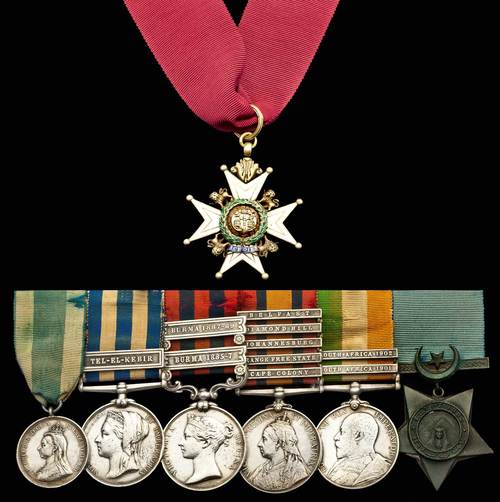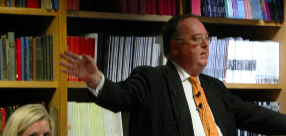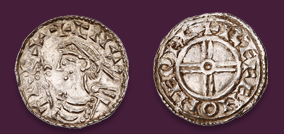
Auction: 323 - The Numismatic Collector's Series Sale
Lot: 751
The Historically Important C.B. Group of Seven to Major-General William Lowe, 7th Dragoon Guards, Who Assumed Command of the British Forces in Dublin During the 1916 Easter Rising, Strengthened The City's Defences, And Took The Unconditional Surrender of the Rebel Forces From Their Leader Patrick Pearse, 29.4.1916; Previously He Had Commanded His Regiment During the Boer War, Where he was Twice Mentioned in Despatches
a) The Most Honourable Order of the Bath, Military Division, Companion's (C.B.) breast Badge, silver-gilt (Hallmarks for London 1890) and enamel, converted for neck wear, in Garrard, London, case of issue
b) Jubilee 1897, silver, unnamed as issued
c) Egypt 1882-89, dated, one clasp, Tel-el-Kebir (Lieut: W.H.M. Lowe, 7/ Dn. Gds.)
d) India General Service 1854-95, two clasps, Burma 1885-7, Burma 1887-89, second clasp facing re-soldered for affixing purposes (...W.H.M. Lowe, 7th. Dn. G..)
e) South Africa 1899-1902, five clasps, Cape Colony, Orange Free State, Johannesburg, Diamond Hill, Belfast (...Col: W.H.M. Lowe. 7. Dn. Gds.), rank partially erased
f) King's South Africa 1901-02, two clasps (Col. W.H.M: Lowe. 7/ Dgn. Gds.)
g) Khedive's Star 1882, unnamed as issued, heavy pitting from Star to Egypt and IGS, therefore nearly very fine, the CB, QSA, and KSA better, mounted as worn on a Spink, London bar; together with the recipient's related miniature awards, the CB a gold badge with integral riband buckle (7)
C.B. London Gazette 29.6.1906 Colonel William Henry Muir Lowe (late 7th Dragoon Guards), Colonel in charge of Cavalry Records (also Staff Officer for Imperial Yeomanry), Northern Command
Major-General William Henry Muir Lowe, C.B., was born in the North-West Provinces, India, in October 1861, the son of William Henry Lowe Esq., Indian Civil Service, and was educated at the Royal Military College, Sandhurst. Commissioned Lieutenant in the 7th Dragoon Guards in October 1881, he served with the Regiment as part of the 1st Cavalry Brigade under General Sir Baker Russell in the Egyptian Campaign of 1882, and was present in the engagements at El Magfar and Mahsama; the action at Kassassin, 28.8.1882; the Battle of Tel-el-Kebir, 13.9.1882; and the subsequent march on and capture of Cairo. In 1886 he went to Burma as a Special Service Officer to the Upper Burma Task Force, and served with them during the Third Burmese War. Promoted Captain in March 1887, and Major in March 1892. In September 1899 he was promoted Lieutenant-Colonel and assumed the command of the 7th Dragoon Guards, leading the Regiment in South Africa during the Boer War, where he was present at the capture of Pretoria and the Battle of Diamond Hill, 11-12.6.1900; was promoted Brevet Colonel, November 1900; and was Mentioned in Lord Kitchener's Despatch of the 8th August 1901: 'At midnight on the 30th July Colonel Lowe, 7th Dragoon Guards, successfully surprised a farmhouse, from which he took 11 armed prisoners with rifles, bandoliers and horses.' (London Gazette 15.11.1901). Again Mentioned in Despatches (London Gazette 29.7.1902), he left the 7th Dragoon Guards in November 1903 on appointment as Assistant Quarter Master General, II Corps, Southern Command, before moving to Northern Command as colonel in charge of cavalry records and staff officer for the Imperial Yeomanry. Appointed a Companion of the Order of the Bath in 1906, and transferred to the Reserve List the following year.
1916 Easter Rising
On the outbreak of the Great War Lowe rejoined the Army as Inspector of Cavalry, and was appointed Brigade Commander, with the rank of Brigadier-General, of the 3rd Reserve Cavalry Brigade, station at Curragh Camp, Co. Kildare, Ireland in 1915. On the outbreak of the 1916 Easter Rising he ordered the Brigade to Dublin. Arriving himself at 3:45am on Tuesday 25th April, with the leading troops from the 25th (Irish) Reserve Infantry Brigade, he assumed command of the British Forces in Dublin, which numbered approximately 2,300 men of the Dunlin Garrison, 1,500 dismounted men from the Curragh Mobile Column, and 840 men of the 25th Irish Reserve Infantry Brigade, and set about securing the line between the railway station, Dublin Castle, and Trinity College, thus dividing the rebel positions north and south of the river. He also ordered the shelling of Liberty Hall by field guns from Trinity College.
On the afternoon of Saturday 29th April, Elizabeth O'Farrell, an Irish nurse and member of Cumann na mBan, was asked by Patrick Pearse to deliver the surrender to the British military. She emerged into heavy fire from No.16 Moore Street which abated when her white flag was recognised. Taken to Lowe, she was sent back to Pearse at Moore Street with a demand for unconditional surrender. Pearse agreed and, accompanying O'Farrell, made his way to the Headquarters of the Military Command at Parkgate where, on behalf of the Government, Lowe received the unconditional surrender of the rebel forces: 'In order to prevent further slaughter of unarmed people and in the hope of saving the lives of our followers, now surrounded and hopelessly outnumbered, members of the Provisional Government at present at Headquarters have agreed to unconditional surrender, and the Commandants of the various districts in the City and Country will order their followers to lay down arms. Signed P.H. Pearse, 29th April, 1916, 3:45pm.' The 1916 Easter Rising was over.
Promoted Honorary Major-General for his services during the 1916 Easter Rising in the New Year's Honours List on 1917, Lowe retired from the army in March 1919, and died in London in February 1944.
Estimate
$15,000 to $20,000




